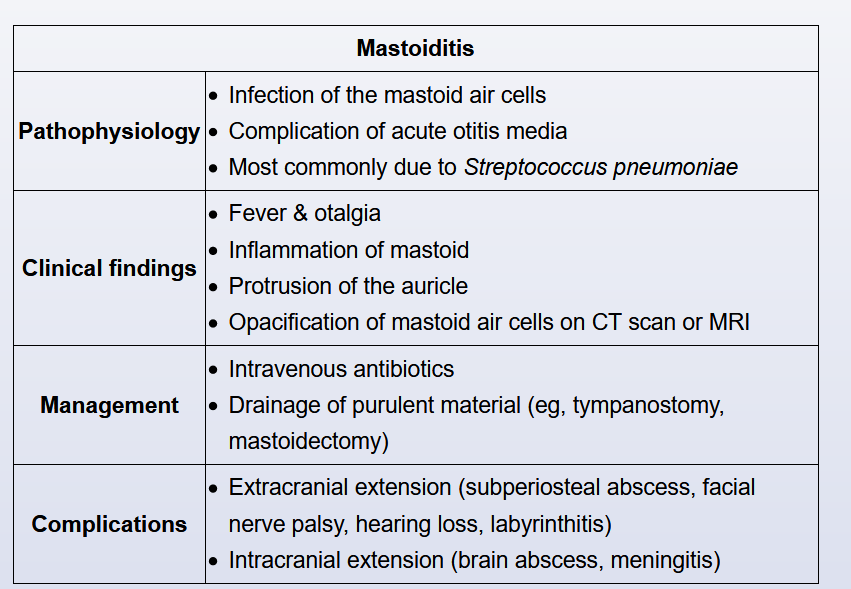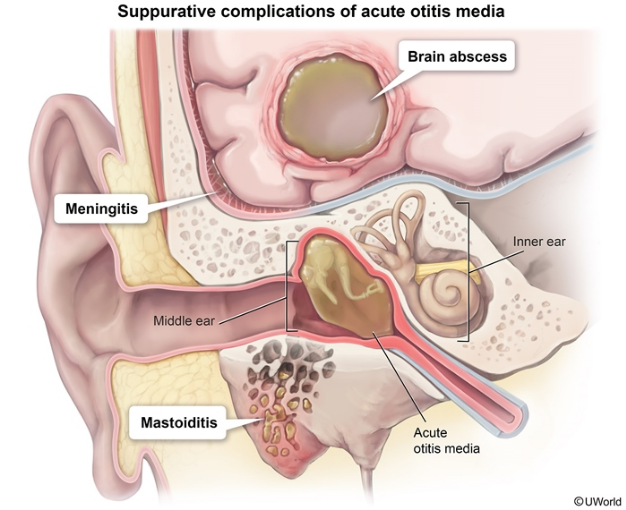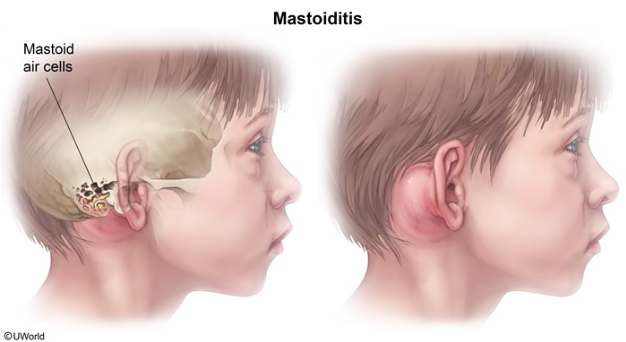acute mastoiditis
- related: Pediatric
This febrile child with a bulging tympanic membrane who has mastoid tenderness and displacement of the external ear likely has acute mastoiditis, the most common suppurative complication of acute otitis media (AOM). The mastoid air cells are in continuity with the middle ear, allowing spread of the infection. In addition to the symptoms of fever and ear pain seen in AOM, infection of the mastoid causes erythema and tender swelling, which can result in outward and/or vertical displacement of the auricle. The tympanic membrane may show evidence of AOM (eg, erythema, bulging, perforation) or may not be visible due to swelling of the external auditory canal.
As with AOM, mastoiditis is most commonly seen in children age ≤2 and is commonly caused by Streptococcus pneumoniae, Streptococcus pyogenes, and Staphylococcus aureus. Pseudomonas aeruginosa has occasionally been implicated, especially in patients with recurrent infections or recent antibiotic use.
Treatment of mastoiditis requires intravenous antibiotic therapy with activity against common upper respiratory pathogens (eg, Streptococcus pneumoniae), as well as Streptococcus pyogenes and Staphylococcus aureus. Expanded coverage for Pseudomonas (eg, cefepime) should be used if there is a history of recent antibiotic use. Drainage of the purulent material is also required. This can be achieved by tympanostomy (± ear tube placement) or mastoidectomy.
Patients should be monitored to ensure that they do not develop more severe complications due to extracranial (eg, subperiosteal abscess, hearing loss) or intracranial (eg, meningitis, brain abscess) extension.


